Picture this: you’re soaring above the clouds en route to a distant paradise or an exciting adventure. The anticipation of exploring new horizons fills your heart with excitement, but then it hits you – you’re on a long-haul flight. Hours upon hours in a confined space, battling discomfort and restlessness can quickly turn that excitement into dread. What is to be done?
Below, we’ll try to equip you with invaluable insights and essential strategies to make your extended flights not only bearable but enjoyable.
First things first – let’s clarify what a long-haul flight entails. Generally spanning more than 8 hours, these transcontinental or intercontinental journeys challenge travelers to endure extended travel time.
We cannot stress enough the importance of staying comfortable during these marathon flights. Your travel experience begins and ends with how well you navigate the journey. By paying attention to your comfort, you can arrive at your destination feeling refreshed, rejuvenated, and eager to seize the wonders that await you.
So, whether you’re a seasoned globetrotter or embarking on your first long-haul odyssey, fasten your seatbelt – the journey begins now!
Pre-Flight Preparations
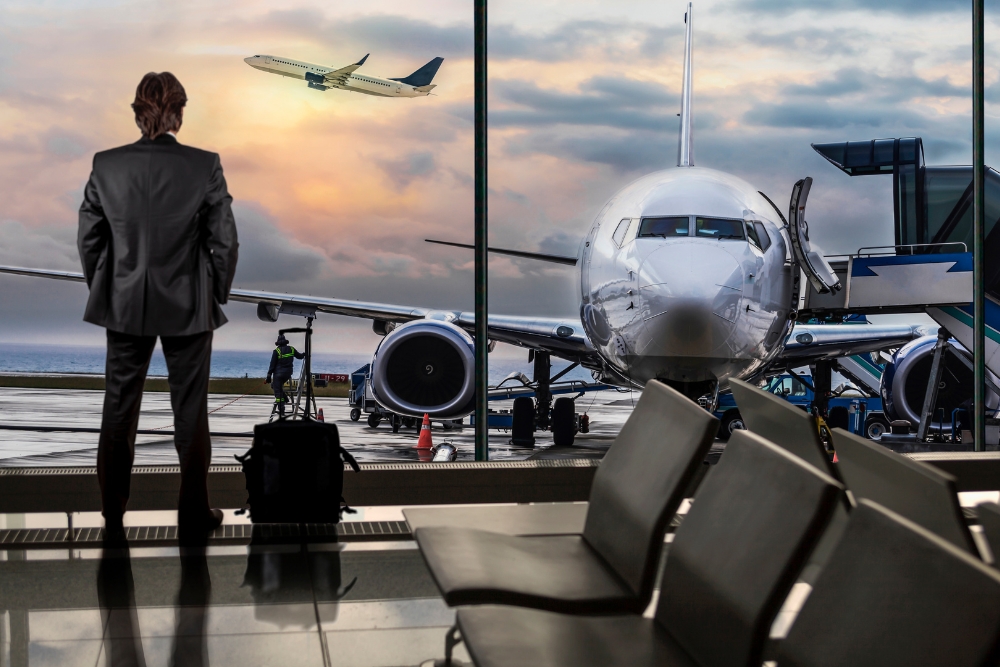
Pre-flight preparations are essential steps that travelers should take before embarking on a long-haul flight to ensure a comfortable and stress-free journey. These preparations are designed to set the stage for a smooth travel experience, from when you book your ticket to when you board the aircraft. Here are the key aspects of pre-flight preparations:
Choose the right airline and aircraft
Research various airlines that operate long-haul flights and compare their services, amenities, and customer reviews. Look for airlines known for their comfort, in-flight entertainment, and quality of service. Some airlines offer more spacious seating options, better meals, and enhanced amenities that can make a significant difference during a long flight. Additionally, consider the aircraft model, as some planes are designed with passenger comfort in mind, offering more legroom and improved seat configurations.
Select the ideal seat
Take advantage of the opportunity to choose your seat during the online check-in process or at the airport desk. Different seat locations can greatly impact your in-flight comfort. Consider factors such as legroom, proximity to restrooms, and whether you prefer a window or aisle seat. Exit rows and bulkhead seats generally offer more legroom, while window seats provide a view and a spot to lean against for rest.
Pack the essentials in your carry-on
Assemble a well-thought-out carry-on bag with all the necessary items to ensure comfort during the flight. Some essentials include a neck pillow for neck support, an eye mask to block out light, earplugs or noise-canceling headphones to minimize disturbances, and compression socks to promote circulation and reduce swelling. Don’t forget to include entertainment options like books, magazines, or electronic devices loaded with movies, music, or games to keep yourself entertained throughout the flight. Additionally, pack some healthy snacks and a refillable water bottle to stay hydrated and avoid relying solely on in-flight meals.
By taking these pre-flight preparations seriously, travelers can set the stage for a more pleasant and enjoyable long-haul flight experience. These seemingly small steps can significantly affect how you feel during the flight and how well you adapt to the challenges of extended travel times.
Dressing for Comfort
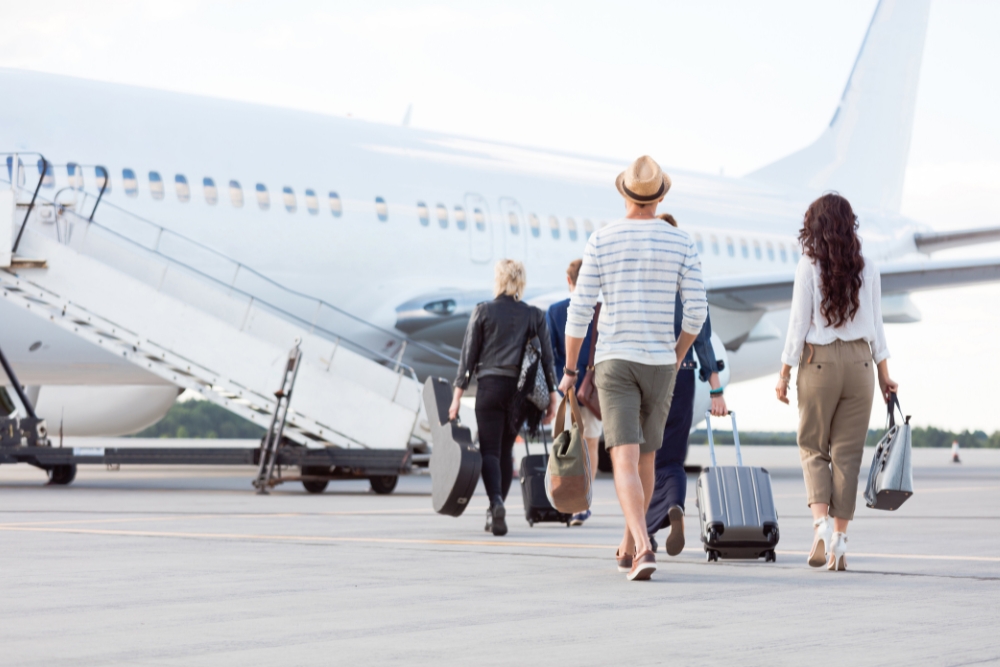
Dressing for comfort is a crucial aspect of preparing for a long-haul flight. The right clothing can significantly affect how you feel during the journey, ensuring that you stay relaxed and at ease throughout the flight. Here are some key tips for dressing comfortably during a long-haul flight:
Choose loose-fitting and breathable clothing
Opt for clothing made from soft, breathable fabrics like cotton or moisture-wicking materials. Loose-fitting attire allows for better air circulation and reduces the risk of feeling constricted during the flight. Avoid tight or restrictive clothing that can cause discomfort, especially during long periods of sitting.
Layer your clothing
The temperature inside the aircraft cabin can vary throughout the flight, so layering your clothing is practical. Start with a light, comfortable base layer, and add a sweater or hoodie that can be easily removed if it gets warm. This way, you can adapt to changing temperatures without feeling too hot or cold.
Consider temperature variations
Airplane cabins can fluctuate in temperature, so it’s essential to be prepared for both warmth and coolness. Even during longer flights, you might encounter moments of chilly air conditioning, so having a light sweater or shawl within reach is advisable. Additionally, wearing comfortable, closed-toe shoes with socks can keep your feet warm during the flight.
Avoid uncomfortable accessories
When choosing accessories, prioritize comfort over style. Avoid wearing jewelry that may become bothersome during the flight, such as tight bracelets or necklaces. Instead, opt for simple, lightweight accessories that won’t cause any discomfort.
Dress in layers for easy security checks
When traveling through airport security checkpoints, you’ll likely need to remove certain items, such as outerwear and belts. Dressing in layers makes this process more efficient, allowing you to quickly remove and put back on any necessary items without feeling rushed.
Pack an extra change of clothes
Depending on the length of your long-haul flight, consider packing an extra set of comfortable clothes in your carry-on. This can be especially beneficial for overnight flights, allowing you to change into fresh clothes before settling in for rest.
In-Flight Comfort Strategies
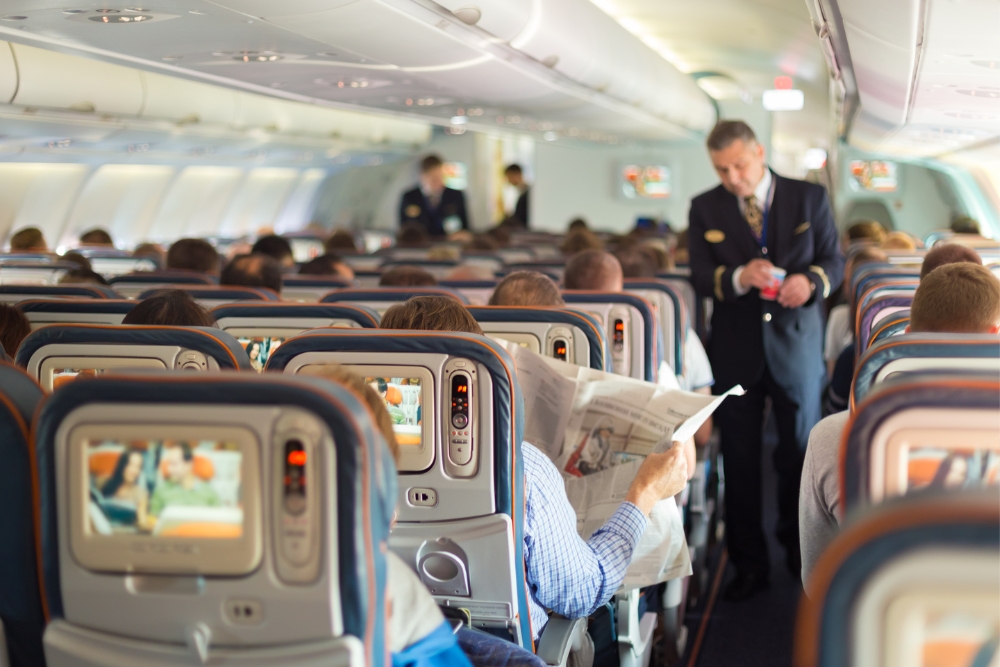
In-flight comfort strategies are essential techniques and practices that can significantly enhance your well-being and overall experience during a long-haul flight. These strategies aim to mitigate the physical and mental challenges often accompanying extended travel periods, ensuring that you arrive at your destination feeling refreshed and ready to embrace your adventure. Here are some key in-flight comfort strategies to consider:
Maintain proper posture and stretch regularly
Long hours of sitting in a confined space can lead to stiffness and discomfort. To alleviate this, practice good posture by sitting straight with your back against the seat and feet flat on the floor. Avoid crossing your legs for extended periods, as it can impede circulation. Additionally, perform simple in-seat stretches and movements to improve blood circulation and prevent muscle tension. Ankle circles, shoulder rolls, and neck stretches can be done discreetly to keep your body limber.
Relaxation and sleep techniques
Restful sleep is vital during long-haul flights, especially for overcoming jet lag and arriving fresh at your destination. Use a neck pillow or travel cushion to support your head and neck while sleeping. An eye mask and noise-canceling headphones or earplugs can help create a conducive environment for sleep, reducing disturbances from light and noise. Consider using relaxation techniques such as deep breathing or guided meditation to calm your mind and promote rest.
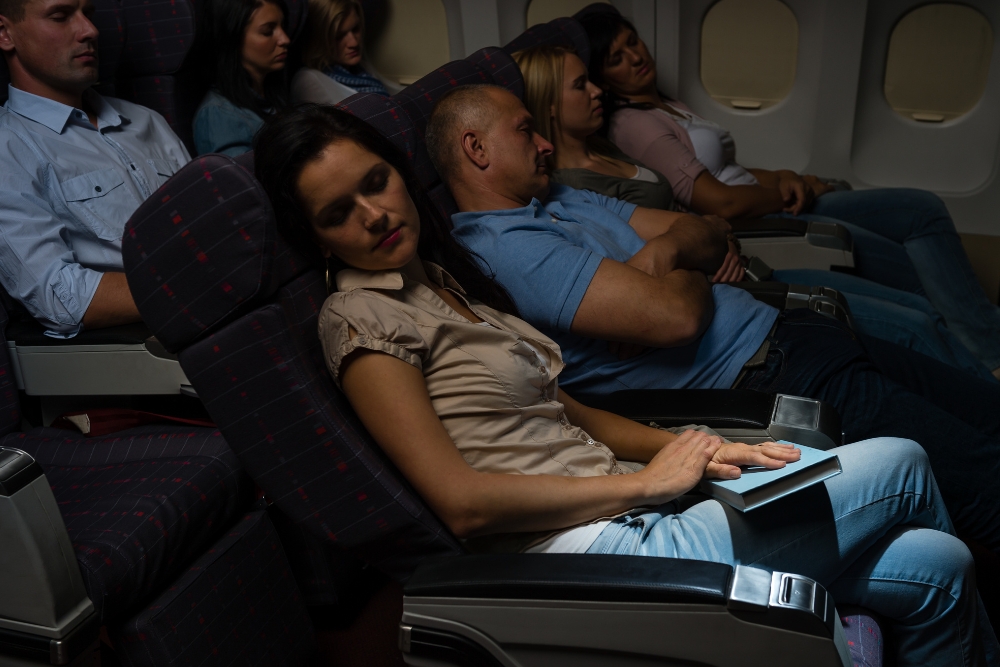
Entertainment and distractions
Keeping yourself entertained during the flight can help pass the time and reduce boredom. Airlines often provide in-flight entertainment, but it’s also a good idea to bring your own entertainment options. Load up your devices with movies, TV shows, music, e-books, or podcasts you enjoy. Engaging in your favorite activities can make the flight shorter and more enjoyable.
Hydration and nutrition
Staying hydrated is crucial during long flights to prevent dehydration, which can exacerbate fatigue and discomfort. Drink plenty of water throughout the flight and avoid excessive consumption of caffeine or alcohol, which can dehydrate you further. As for meals, choose light and nourishing options that won’t leave you feeling overly full or uncomfortable.
Utilize in-flight amenities
Many airlines offer additional amenities to enhance passenger comfort. These might include blankets, pillows, and amenity kits with essentials like toothbrushes and eye masks. Don’t hesitate to request these amenities from the flight attendants if they aren’t readily available.
Get up and walk around
Take advantage of opportunities to get up and walk around the cabin whenever possible. Walking helps improve blood circulation and prevents the risk of deep vein thrombosis (DVT). Consider taking a stroll down the aisle or doing a lap around the cabin during longer stretches of the flight.
Coping with Jet Lag

Coping with jet lag is a common concern for travelers, especially those embarking on long-haul flights that cross multiple time zones. Jet lag occurs when your body’s internal clock (circadian rhythm) becomes out of sync with the local time at your destination. As a result, you may experience various symptoms, including fatigue, insomnia, irritability, difficulty concentrating, and digestive disturbances. However, there are several strategies to help minimize the impact of jet lag and facilitate a smoother adjustment to the new time zone:
Gradually adjust your sleep schedule
Before departing on your trip, try gradually adjusting your sleep schedule to match your destination’s time zone. Go to bed and wake up an hour earlier or later each day, depending on the direction of travel, to help your body acclimate to the upcoming time change.
Get plenty of sunlight
Exposure to natural light helps regulate your body’s internal clock. After arriving at your destination, spend time outdoors during daylight hours to signal to your body that it’s daytime. This can help reset your circadian rhythm and promote wakefulness during the day and sleepiness at night.
Stay hydrated and avoid excessive caffeine and alcohol
Dehydration can worsen the effects of jet lag, so make sure to drink plenty of water before, during, and after your flight. Limit your consumption of caffeine and alcohol, as these can disrupt your sleep patterns and contribute to dehydration.
Take short naps strategically
If you’re feeling exhausted upon arrival, it’s okay to take short naps to recharge. However, limit these naps to 20-30 minutes and avoid sleeping too close to bedtime to prevent further disruption of your sleep schedule.
Use sleep aids cautiously
While it may be tempting to use sleep aids or medications to help you sleep during the flight or adjust to the new time zone, using them cautiously is essential. Consult a healthcare professional before taking any medication, as some sleep aids can have adverse effects or interact with other medications.
Allow time for adjustment
It may take a few days for your body to adjust to the new time zone fully. Be patient with yourself and give your body the time it needs to acclimate naturally.
Schedule activities accordingly
Plan activities that align with the local time at your destination. Engaging in daylight activities and avoiding heavy meals close to bedtime can help reinforce your body’s natural sleep-wake cycle.
Connecting Flights and Layovers
When embarking on long-haul flights that involve connecting flights and layovers, travelers can face the challenge of navigating these intermediate periods comfortably and efficiently. These in-between segments of air travel present opportunities for relaxation and exploration and potential stressors if not managed wisely. To ensure a smooth travel experience, consider the following tips for coping with connecting flights and layovers:
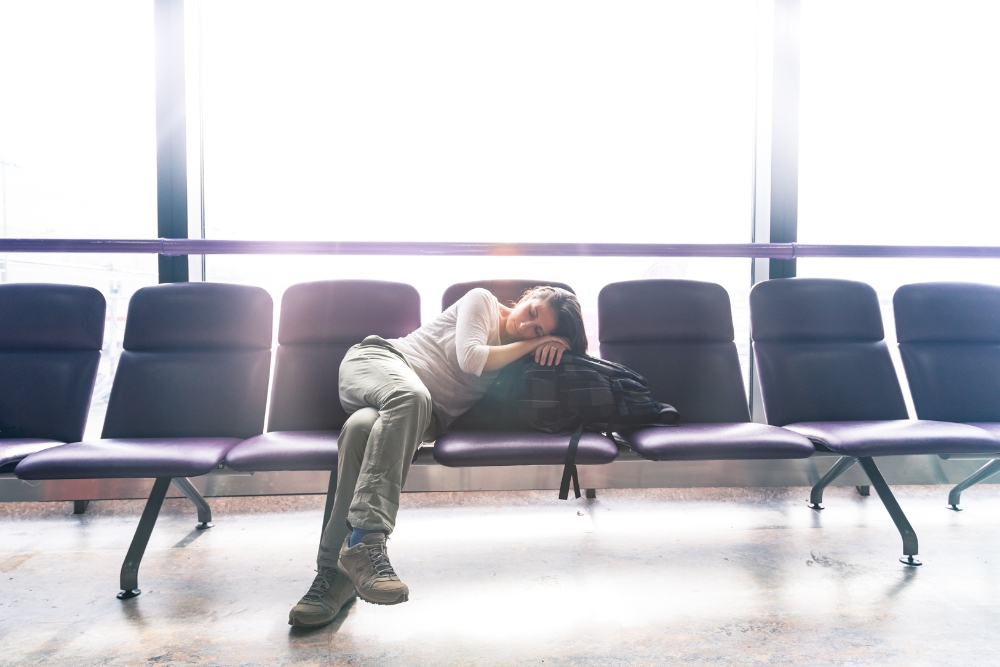
Tips for Navigating Layovers Comfortably
Suggest Finding Airport Lounges for Relaxation and Comfort During Layovers: Airport lounges offer a haven of tranquility amidst the bustling terminals. Many lounges provide comfortable seating, Wi-Fi access, complimentary snacks and beverages, and sometimes even shower facilities. Consider investing in lounge access through airline loyalty programs, credit card perks, or one-time passes for a more pleasant layover experience.
Encourage Travelers to Explore the Airport or Stretch Their Legs During Extended Layovers: For layovers extending beyond a few hours, stretch your legs and explore the airport’s amenities. Many airports have shopping centers, art installations, and even local cultural exhibits that can make for an enjoyable layover experience. Walking around and engaging in light physical activity can help alleviate feelings of restlessness and break up the time spent waiting for your connecting flight.
Managing Time Between Connecting Flights

Provide Advice on Planning Adequate Time Between Connecting Flights to Reduce Stress:
- When booking connecting flights, be mindful of the layover time allotted between flights.
- Aim for layovers that allow sufficient time to disembark from your first flight, complete any required security checks or immigration procedures, and comfortably reach your next departure gate.
- Avoid booking tight connections that could lead to unnecessary stress and potential missed flights.
Recommend Staying Organized and Using Mobile Apps for Flight Updates: Keeping track of flight schedules and updates is crucial during layovers. Utilize mobile apps from airlines or flight-tracking applications to stay informed about gate changes, delays, or any other flight-related information. Staying organized and updated can help you plan your layover time effectively and avoid any last-minute surprises.
Cultural Considerations and Travel Etiquette
When embarking on international travel, it’s essential to be mindful of cultural norms and travel etiquette to ensure a smooth and respectful experience both for yourself and the local communities you encounter. Different cultures have unique customs, traditions, and social norms, and being aware of and respectful toward them is a key aspect of being a responsible and considerate traveler.
Briefly Discuss Cultural Norms and Etiquette When Traveling Internationally
Greeting and Body Language: In many cultures, greetings are an important part of social interaction. Handshakes, bows, or other forms of greeting may be customary. Some cultures value personal space more than others, so being mindful of personal boundaries and body language is crucial.
Dress Code: Different countries and regions have varying dress codes based on religious, social, or climatic factors. Research and respect local dress norms to avoid unintentional cultural insensitivity.
Language and Communication: Learning a few basic phrases in the local language can show respect for the local culture. Additionally, be attentive to your tone of voice and avoid raising your voice in public places, as it may be considered impolite in some cultures.
Table Manners: Dining customs can differ significantly from one culture to another. Familiarize yourself with local table manners to avoid unintentional faux pas while dining in public or in someone’s home.
Religious Practices: Respect religious sites and practices by adhering to appropriate dress codes and behaviors. In some places of worship, covering one’s head or removing shoes may be required.
Tipping and Gift-Giving: Tipping practices and gift-giving customs vary across cultures. Tipping may not be expected in some places, while in others, it is customary. Similarly, presenting gifts may be integral to social interaction in certain cultures.
Advise Readers to Be Respectful and Considerate of Other Passengers

Traveling often involves sharing confined spaces, such as airports and airplanes, with other passengers from diverse backgrounds. In such settings, it’s essential to be respectful and considerate of others, regardless of cultural differences:
Noise and Volume: Keep noise levels to a minimum, especially during flights. Use headphones for music or watching movies, and speak softly when engaging in conversations.
Personal Space: Respect the personal space of fellow travelers, especially in crowded places. Avoid leaning or encroaching into the space of others.
Patience and Understanding: Be patient and understanding, particularly during travel delays or challenging situations. Recognize that everyone’s journey may have different complexities and emotions attached to it.
Language and Gestures: Be mindful of your language and gestures while communicating with others. Avoid making loud or offensive comments that might inadvertently upset or offend those around you.
Conclusion
Embarking on a long-haul flight no longer needs to be a daunting prospect. Armed with a wealth of comfort tips and strategies, you can confidently take to the skies and turn those marathon journeys into enjoyable and rejuvenating experiences.
As you set out on your next long-haul journey, remember that your comfort is in your hands. By incorporating these comfort tips into your travel routine, you can transform those long hours in the air into moments of rest, relaxation, and excitement. Embrace the journey, savor the experience, and create memories that will last a lifetime!
Photos: CanvaPro
You may also like: How To Travel Light on a Cruise: A Guide to Packing Wisely




